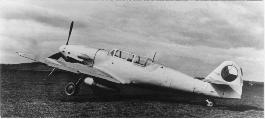 |
CS-99 Messeschmitt Me 109 G-12. After WW II twenty nine Bf 109 Gs underwent conversion onto the CS-199 two-seat-trainer version. Alclad steel-framed wings. An alclad fuselage was of a duralmin-semicircular-moulded construction, wood-framed tailplane and fin covered by plywood, an steel-framed elevator and rudder was covered by fabric. Alclad plates cowling. No armament.
|
| |
|
|
C-106 Buecker Bu 181. two-seat trainer of German origin was turned out at the town of Otrokovice in three versions differing only in its powerplant. Used by the Cz AF in EFTSs and later by the Svazarm Civil Flying Clubs for all-age enthusiasts. Top speed of 196 km.p.h.,range 960 km. Span 10.60 m, length 7.85 m, empty weight 495 kg. Wood-framed wing covered by plywood and fabric, wooden frame od fin and tailplane covered by plywood,steel-framed control surfaces by fabric. Steel-tube-welded front part of the fuselage, the rear was wooden. Two-blade wooden propeller, undercarriage fixed.
|
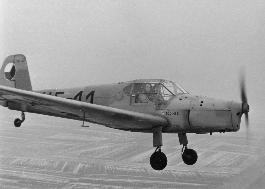 |
| |
|
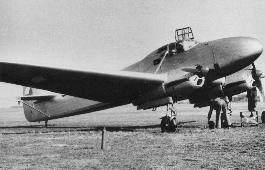 |
D-58 Fockewulf 58. The only machine of this type got aloft in the post-war Czechoslovakia, in early 50s.Entering service in 1934 it had been used by the Luftwaffe during WW II for pilot training and liasion duties. Two-seat lower-wing-strut-monoplane of the span of 21 m and length 14.10 m, top speed 255 km.p.h., range 670 km and service ceiling of 5 200 m. Powered by two Argus As 10C engines of 240 hp each. Steel-tube-welded fuselage covered by plywood, dural metal plates and fabric. Wings wood-as well as steel-framed and covered by plywood.
|
| |
|
|
C-2 Arado Ar 96 Bs in production by the Avia Letnany Co. even in 1949. Used in the Cz Army Training Schools for advanced flying, observer training, as well as bombing and gunnery practice till 1952. Span 10.96 m, length 9.13 m, empty weight of 1 295 kg. Powered by an 465 hp Argus As 410 A, top speed of 350 km.p.h., service ceiling 7 100 m and range 685 km. A two-blade propeller either wooden or composite being articulated on ground only. Alclad steel-framed wings, fuselage and tailplane, fabric-covered steel-framed elevator and rudder. Sheet metal plate cowling. Undercarriage retractable, tailwheel fixed.Armed by one 7.92 mm-cal synchronized machine gun.
|
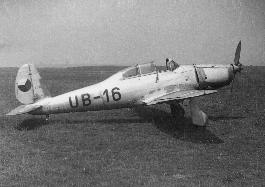 |
| |
|
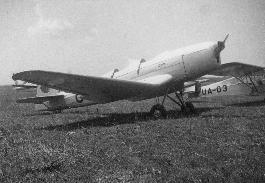 |
C-1 Klemm Kl 35 D was mass-built for the Luftwaffe at the Otrokovice plant SE Moravia from March 1939 to May 1945. Kl 35 D was in use only for several months after ending hostilities in the Olomouc Military Training School commanded by General Joseph Duda. The type was of mixed construction powered by a 100 Thoma engine.
|
| |
|
|
C-104 Buecker Bu 131 trainers of German origin were turned out in Moravia after March 15, 1939. Popular not only in military pilots and ones of the Svazarm Flying Clubs. C-104s were flown by all the Cz aerobats in the 50s. Span 7.40 m, length 6. 76 m, empty weight 390 kg. A 105 Walter Minor powerplant driving a wooden two-blade propeller. Top speed 185 km.p.h., service ceiling 4 300 m, range 650 km. Fixed undercarriage. The front-rear dual control two seater.
|
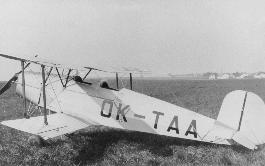 |
| |
|
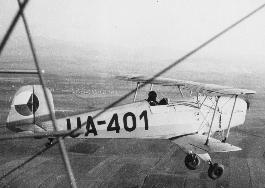 |
C-4 Buecker Bue 131 D Built by the Aero Comp also after WWII. Used as in elementary as service flying training. The first batch of 20 machines was equipped by the original German Hirth 504 engine. C-4s entered service in the Military Air Academy first used not only for the training mentioned above, but also for aerobatics one. Steel-tube-welded fuselage fabric-skinned except cowling. Wood-framed wings as well as steel-framed taliplane, fin, rudder and elevator covered by fabric. A shot of No.16 production C4.
|
| |
|
|
K-65 Fiesseler Fi 156 was turned out even after the end of hostilities by the Mraz Company at the town of Chocen, E Bohemia. Used by the Cz AF till mid 50s. Despite the empty weight of 970 kg Fi 156 got aloft from any tiny strip owing to an 240 Argus As 10 C engine.
|
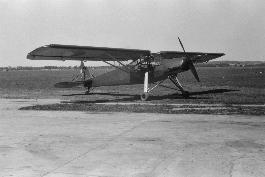 |
| |
|
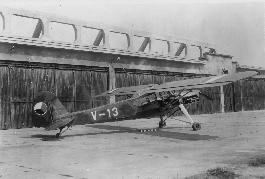 |
K-65 nicknamed Stark was used for spraying and later glider tugging-eg at the Prosteyov Flying Club the machine OK-CLO from 1958 to 1960. Wood-framed wings and aileron partly covered by plywood plus fabric, a steel-framed fin and tail control surfaces covered by fabric. Also a welded-steel-tube fuselage was of fabric skinning. Sheet metal plate cowling. Span of 14.25 m, length 9.90 m, top speed 160 km p.h., service ceiling 4 600 m, range 385 km.
|
| |
|
|
C-9 Fockewulf Fw 44 was a captured trainer called "Stieglitz " This two-seat training type later code named C-14 was even able to perform aerobatics, but his service was short-lived due to spare parts of German origin being not available. That reason for only two or three machines of this type were used in Cz civil flying for a few years. Powered by an 150 air-cooled 14 valve radial BMW-Bramo Sh 14 A engine. C-9 was of fabric skinned mixed construction.
|
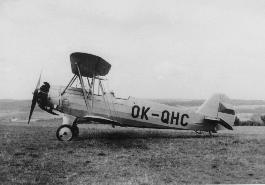
|
| |
|
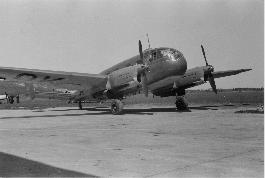 |
C-3 Siebel Si 204. In production by the Aero and CKD Praga plants from 1943. Used by the Luftwaffe for transport or advanced flying training duties. A C-103 version in use by the Svazarm from 1950 for para dropping. Crewed by two, seven passengers. Two Argus As 411s of 590 hp each, top speed 350 km.p.h., service ceiling 7 500 m, range 900 km. Empty weight 3 920 kg, span 21.28 m, length 11.95 m, undercarriage members retracted into fuselage, a tail wheel fixed. Alclad steel-framed wings, tailplane and fin, steel-framed tail control surfaces covered by fabric. fuselage of an alu-monocoque construction.
|
| |
|
|
D-43 Junkers W 34 a transporter used by the "Slovakian State`s " AF in WWII. Two were flown by the Slovaks across the frontline in 1944, one in service with No 1 Mixed Air Division in Poland. After the War in use by the Cz AF. Span 18.48 m, length 10.27 m, empty weight 1 700 kg. An composite two-blade propeller, an radial BMW engine of 660 hp, top speed 265 km.p.h., service ceiling 6 300 m range 900 km. Crew of two, six passengers. All-metal construction of corrugated stressed light alloy, fixed undercarriage.
|
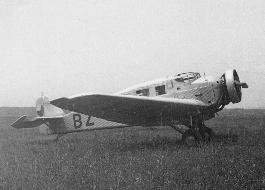 |
| |
|